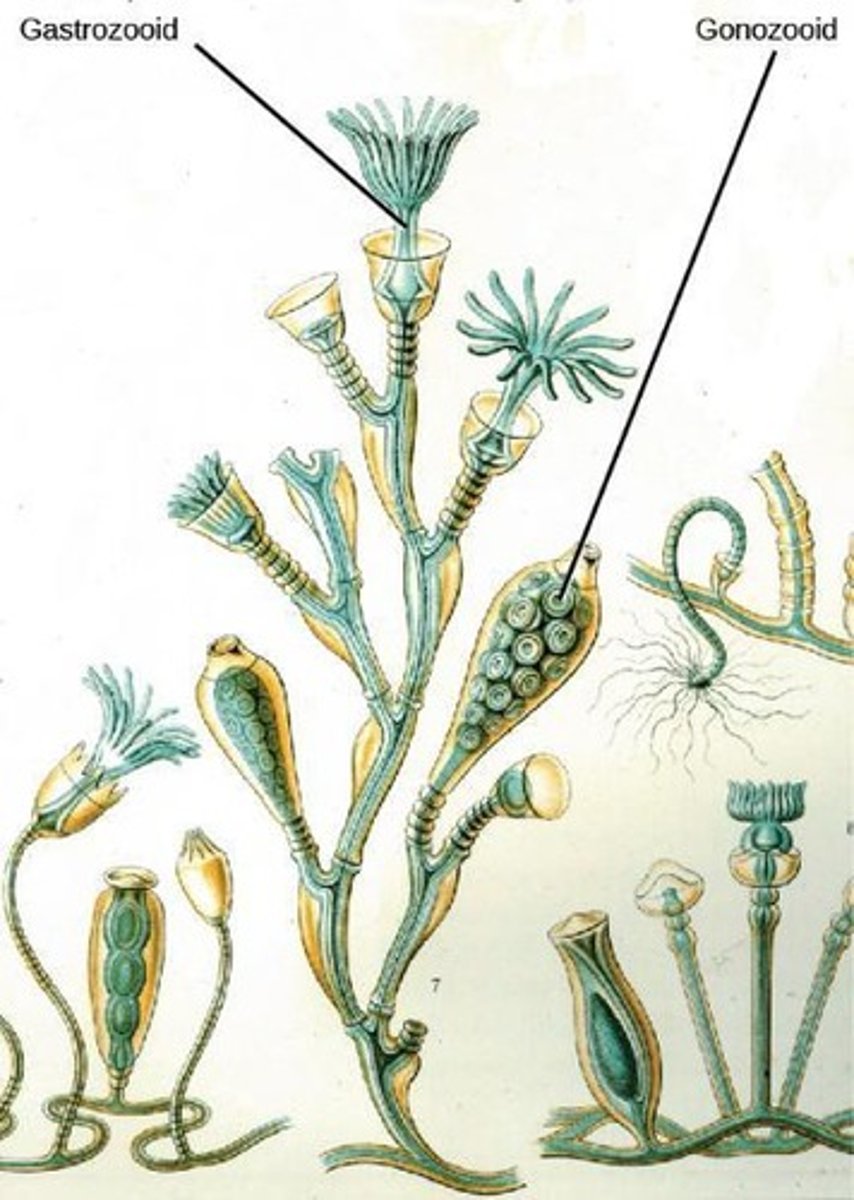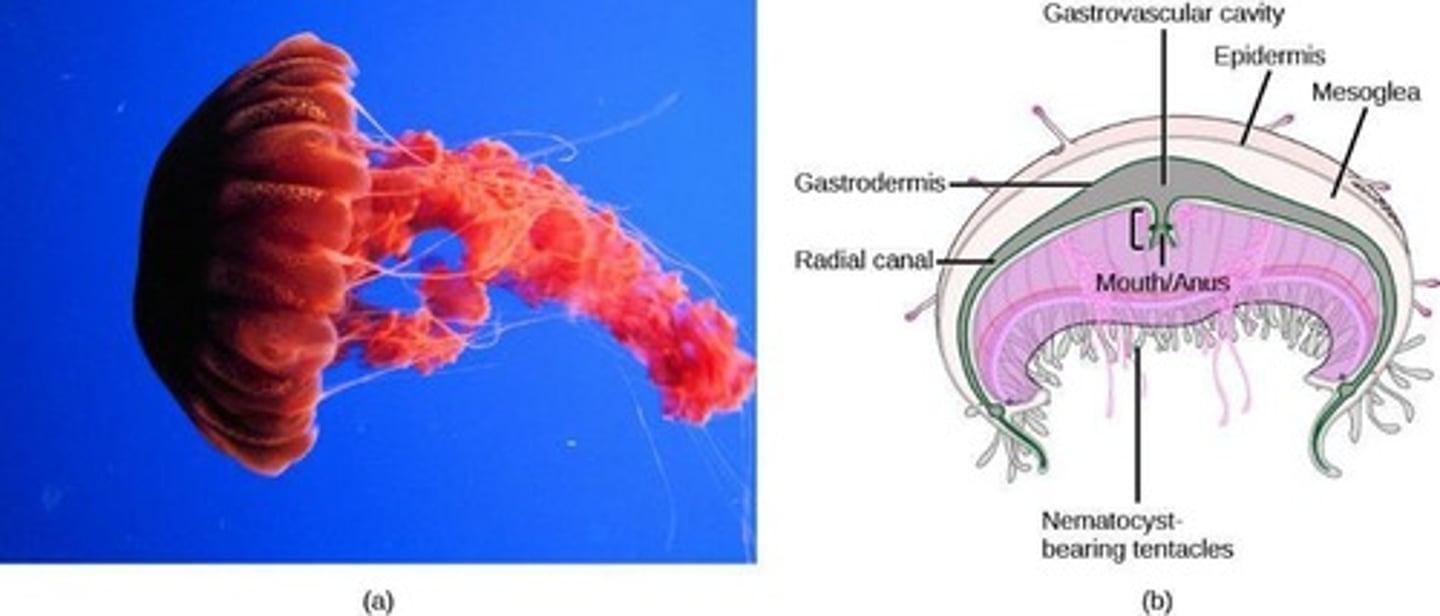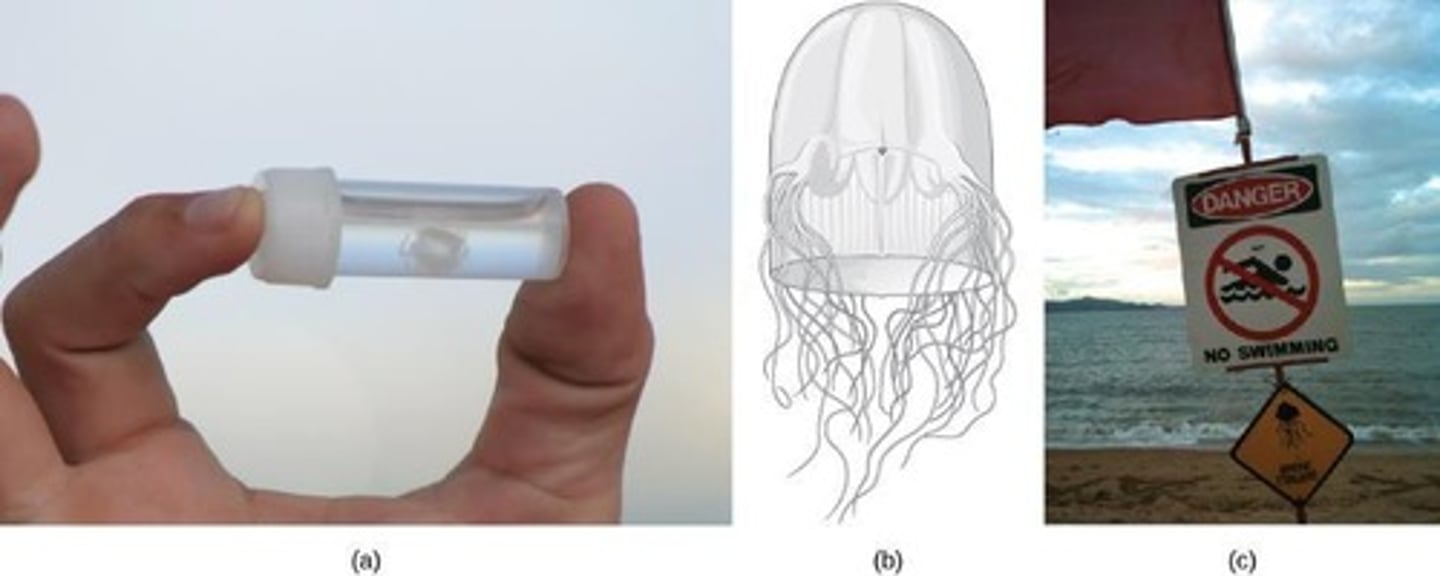Invertebrate Biology: Cnidarians and Annelids Overview
1/28
There's no tags or description
Looks like no tags are added yet.
Name | Mastery | Learn | Test | Matching | Spaced |
|---|
No study sessions yet.
29 Terms
Cnidaria
Phylum including corals, jellyfish, and anemones.
Anthozoa
Class of Cnidaria; includes corals and anemones.

Scyphozoa
Class of Cnidaria; true jellyfish.

Cubozoa
Class of Cnidaria; box jellyfish.

Hydrozoa
Class of Cnidaria; includes hydra and Portuguese Man O' War.

Polymorphic
Organisms with multiple body forms in life cycle.
Gastrozooid
Feeding structure in colonial cnidarians.
Gonozooid
Reproductive structure in colonial cnidarians.
Coenosarc
Living tissue connecting zooids in colonial cnidarians.
Ctenophora
Phylum of comb jellies; transparent and gelatinous.
Platyhelminthes
Phylum including flatworms, with ~20,000 species.
Turbellarians
Free-living flatworms within Platyhelminthes.
Cestoda
Class of Platyhelminthes; includes tapeworms.
Trematoda
Class of Platyhelminthes; includes flukes.
Cephalization
Development of a head region with sensory organs.
Proglottids
Segments of tapeworms containing reproductive organs.
Annelida
Phylum of segmented worms; includes earthworms.
Oligochaeta
Class of Annelida; includes earthworms.
Polychaeta
Class of Annelida; marine worms with bristles.
Hirudinea
Class of Annelida; includes leeches.
Clitellum
Reproductive structure in some annelids for egg storage.
Chaetae
Bristle-like structures on annelids for movement.
Hydrostatic skeleton
Fluid-filled coelom providing structural support.
Planaria
Example of free-living flatworm in Platyhelminthes.
Dugesia
Genus of planarians; nonparasitic flatworms.
Venus' girdle
Ctenophore species known for ciliated rows.
Comb jellies
Gelatinous marine predators with cilia for movement.
Cnidocyte
Specialized cell in cnidarians for capturing prey.
Medusa
Free-swimming stage in the life cycle of cnidarians.
